Art Education Importance
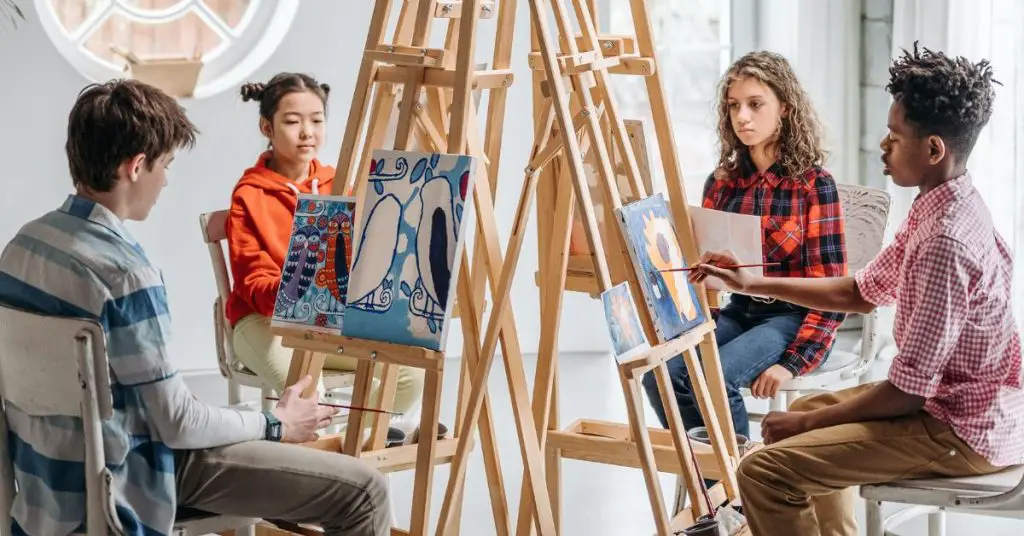
Imagine a student who has recently moved to the United States from a different country. She’s trying her best to adjust and fit in, but she’s having trouble learning English and understanding the new culture around her.
Then one day, as part of an art class assignment, she takes out some markers and paper and starts drawing a picture that expresses how she feels about being in her new home.
Suddenly, all of the struggles she was facing seem much easier — because through art, she can express herself without needing words.
This is just one example of why art education is so important; it serves as an outlet for students to express themselves while also teaching them valuable lessons such as creativity, self-discipline, problem-solving skills and more.
Art doesn’t just give students the opportunity to show their work — it gives them permission to think outside the box and be open to sharing their ideas.
With this type of education comes greater knowledge which allows children to develop emotionally, intellectually, socially and spiritually. The importance of art in education cannot be understated.
It gives students opportunities they may not have had otherwise – whether it’s helping those struggling with language barriers or giving everyone else an outlet for creative expression.
Making sure kids understand the value of art should be a top priority for any educational system looking to help its learners reach their full potential.
- The Importance Of Art In Education
- Overview Of Art Education
- Benefits Of Arts Education For Students
- Exploring Arts Integration In The Classroom
- The Impact Of Art On Student Engagement
- Ways To Incorporate Visual Arts Into A Curriculum
- Understanding The Importance Of Art Education
- Final Thoughts on the Importance Of Art in Education
Overview Of Art Education
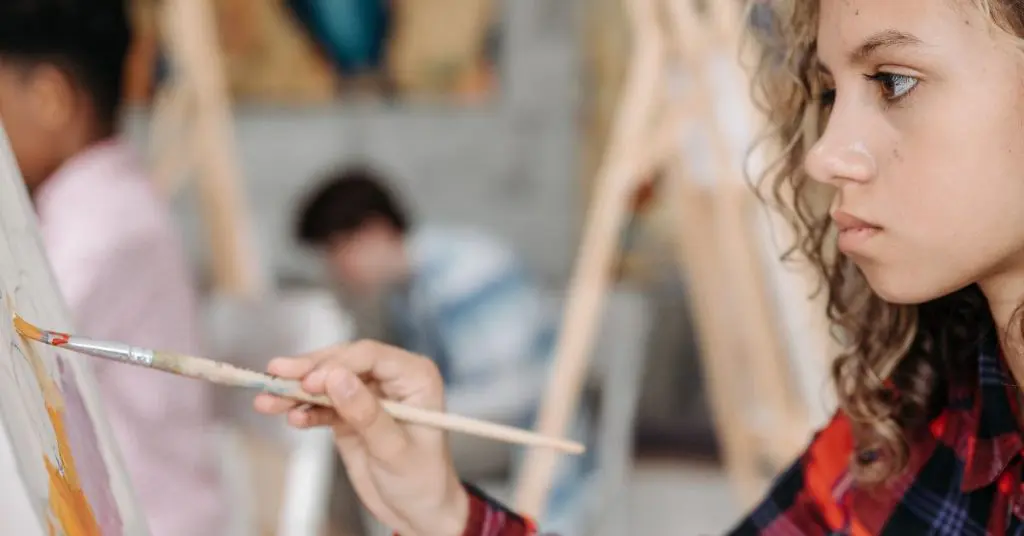
Art education is an integral part of any student’s development. From a young age, children are exposed to and encouraged to explore the visual arts.
Through art learning experiences, students develop creative thinking skills that can be applied in all other areas of their lives. Arts integration into the curriculum allows for a deeper understanding of core concepts such as math, science, history and language.
It also helps build self-confidence, and problem-solving ability and encourages collaboration with others.
Art education is crucial in providing opportunities for meaningful engagement with diverse cultures and perspectives.
Introducing a variety of mediums and techniques enables learners to express themselves through different forms of expression.
Moreover, it helps foster curiosity which leads to further exploration outside the classroom setting.
As we take into account these various aspects of art education, its importance becomes quite evident.
Benefits Of Arts Education For Students
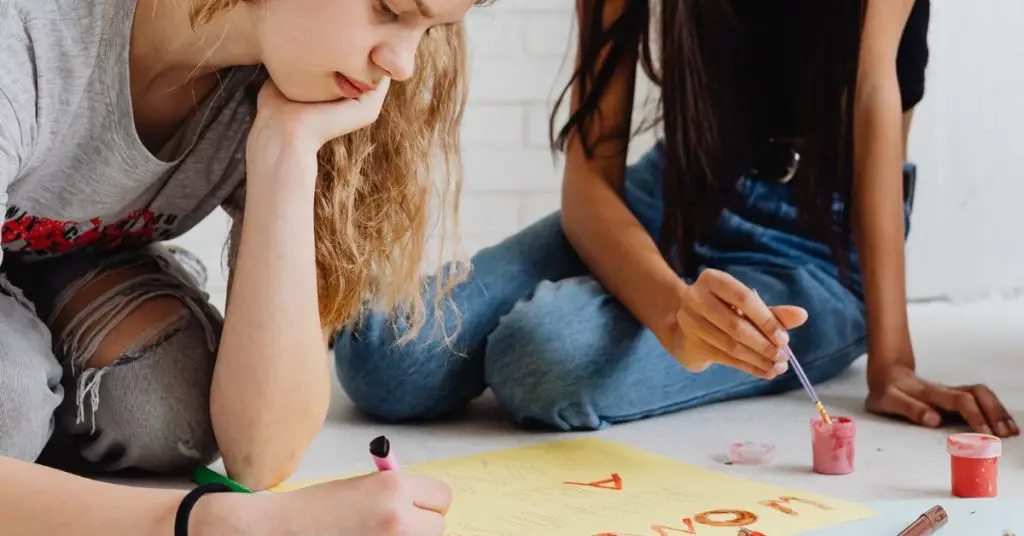
It is evident that there are numerous benefits to students associated with art education.
From research-based findings, arts integration has been linked to higher academic achievement as well as a plethora of other positive outcomes for children.
Participating in the arts regularly can help build confidence and self-esteem in young people while also contributing to improved communication skills.
Arts experiences open up opportunities for creative problem-solving through exploration and experimentation.
Students who take part in art activities have the chance to think critically about their work and learn how to express themselves through various mediums such as painting or sculpture.
Additionally, they may gain valuable insights into different cultures which could lead them on paths towards meaningful careers later in life.
Furthermore, this form of learning helps develop motor skills in children by building eye-hand coordination and encouraging fine motor control.
These advantages demonstrate why including art education in schools is so beneficial for student’s growth and development – from cognitive processes to physical abilities.
As educators, we should continue striving towards creating more robust curricula that incorporate the arts in order to ensure our students reach their fullest potential.
1. Developing Motor Skills Through Art
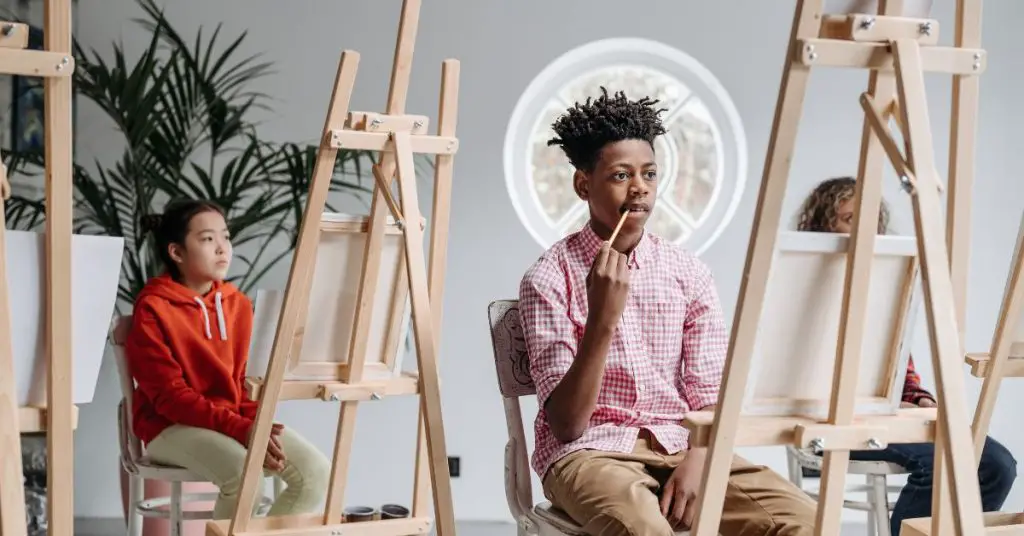
Art education provides countless opportunities for students to develop motor skills.
From hands-on arts experiences like painting and sculpting to music instruction that requires coordination of the fingers and mouth, an effective arts program offers a variety of activities designed to encourage motor skill development.
Students learn how to move their arms, wrists, and hands with precision as they engage in tasks required by various art forms.
The more practice students have to engage in these creative endeavours, the stronger their fine motor control will become.
The ability to create something from nothing also helps build confidence in students’ abilities to problem-solve and work through difficult situations.
This is especially important when it comes to developing hand-eye coordination, which can be beneficial for many different aspects of life outside of school.
As children gain experience participating in artistic activities, they form a better understanding of just how powerful their own minds are when it comes to creating things with their hands.
With this newfound knowledge, they can take on any challenge that comes their way with enthusiasm and determination.
Transitioning into enhancing creativity and imagination then becomes natural since there has already been established a strong foundation of motor skills developed through art education experiences.
2. Enhancing Creativity And Imagination
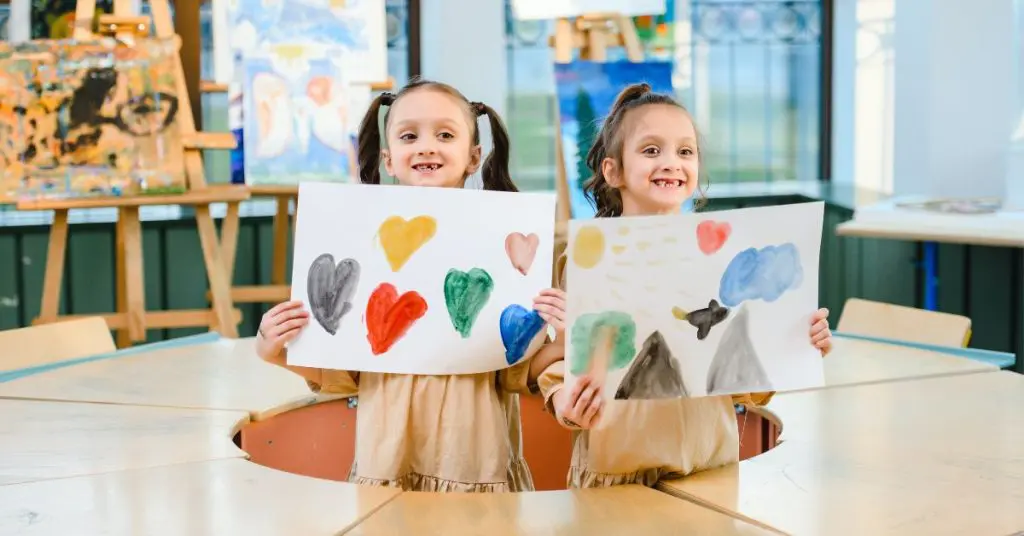
Have you ever wondered how to foster creativity and imagination in the classroom?
Art plays an essential role in providing a well-rounded education, as it teaches students valuable lessons that go beyond the traditional curriculum.
Arts teach children social and emotional skills while boosting their critical thinking abilities through a careful and thorough analysis of visual images.
Moreover, art encourages creative problem-solving as it allows children to explore different ideas based on their own unique perspectives.
Through this process, pupils are able to develop empathy for others by uncovering hidden meanings behind the artwork.
Additionally, art helps promote social and emotional development by allowing students to express themselves freely without fear of judgement.
By engaging in activities such as painting or drawing, young people can learn important life skills such as communication and collaboration with peers.
Engaging in artistic projects not only enhances creativity and imagination but also opens up new pathways for learning that otherwise may have been overlooked.
As such, art is an invaluable tool for both educators and learners alike when seeking to stimulate growth among young minds.
With its ability to inspire new possibilities, art provides endless opportunities for exploration within classrooms across all grade levels.
3. Promoting Social And Emotional Development
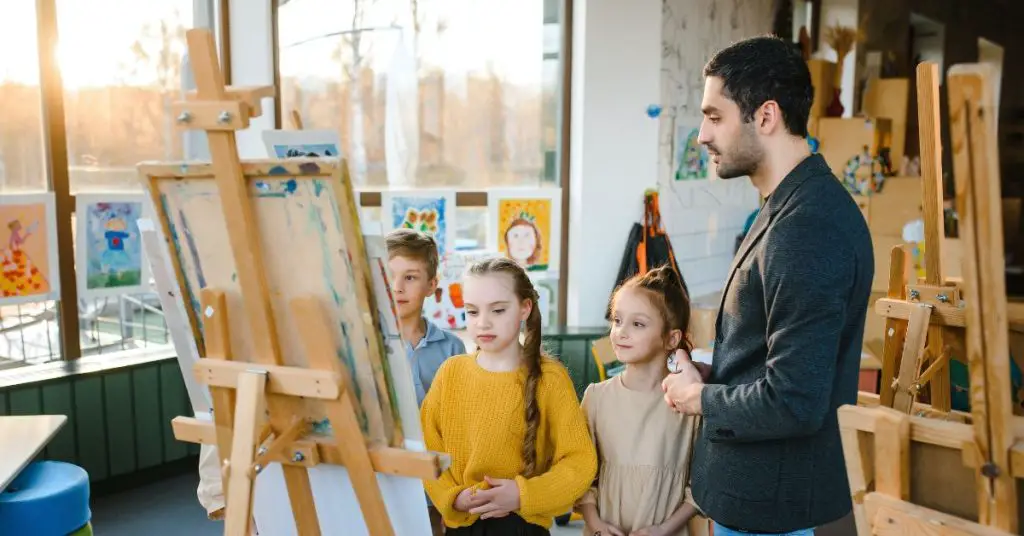
Art plays an important role in the development of social and emotional skills for all students, not just those studying art.
By engaging with artworks or creating their own projects, art students learn about compassion for others as well as critical thinking skills.
Non-arts students can also gain these benefits from exploring different forms of visual expression.
Art encourages lifelong learning by fostering creative problem-solving abilities through experimentation and exploration.
Moreover, when children are allowed to express themselves freely within a safe environment it develops self-confidence and builds trust between peers.
The ability to appreciate diverse cultures is another key component that art brings to the classroom setting.
Not only does this promote greater understanding and acceptance of cultural differences among students but it also helps them develop empathy towards unfamiliar customs and values.
Through art activities such as visits to museums or trying out traditional dances, children become more aware of global issues while connecting with each other on a deeper level.
This ultimately leads to increased cultural awareness which serves as an invaluable tool in our ever-changing world.
4. Increasing Cultural Awareness

Exploring the world of art is like taking a journey around the globe.
It has the unique ability to break down cultural barriers and expand one’s horizon by introducing us to new perspectives.
By tapping into arts organizations, local arts initiatives, vibrant performing arts scenes and more, students can begin to better understand different cultures.
When exposed to such experiences, they become much more aware of their place in this global community while being empowered to express themselves on an individual level.
In addition to increasing cultural awareness, having access to art education also strengthens academic performance.
Students who participate in creative activities excel academically because they develop skills that are not only applicable inside the classroom but outside as well.
Through engaging with arts and culture, students gain problem-solving abilities, confidence and improved communication that will benefit them for years to come.
5. Strengthening Academic Performance
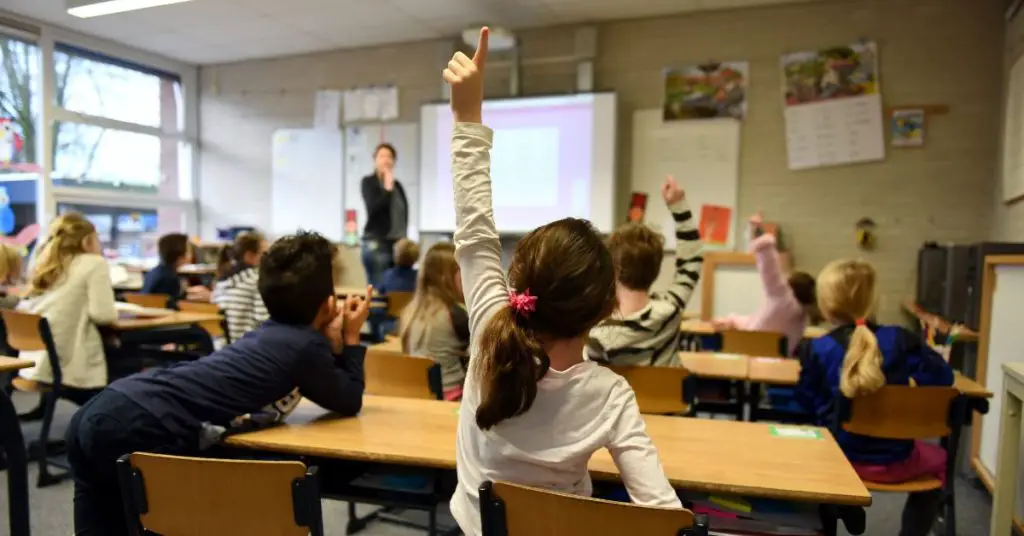
A well-rounded education that includes the arts can help students strengthen their core academic skills.
By incorporating creative outlets into our teaching, we can foster a learning environment where students will be more engaged in their studies and better able to apply them in practical situations.
For example, art projects encourage critical thinking and problem-solving as students work to complete an assignment.
In addition, participation in art classes or activities like music, drama, and dance may give students extra motivation when approaching seemingly difficult tasks such as writing.
Through the use of these resources, a student might even win an award for writing!
The potential for utilizing art within education is vast; its ability to influence how we approach life experiences should not be overlooked.
Art encourages us to think differently by providing opportunities for self-expression and personal growth.
This allows us to broaden our understanding of ourselves and others while developing essential communication skills along the way.
These qualities are integral components of any successful educational journey and provide learners with tangible benefits they can draw upon throughout their lives.
6. Fostering Self-Expression Through Art
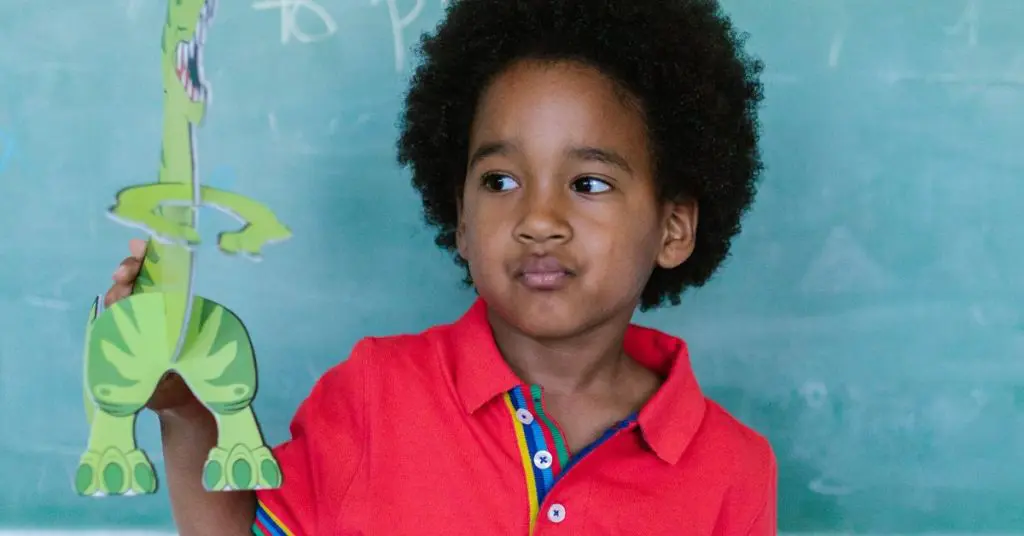
It is evident that providing a well-rounded education in schools, including music and art, can contribute to students’ academic success.
To foster self-expression through art, teaching artists should be hired to help guide young learners in developing their creativity and imagination.
Art forms such as painting, drawing, sculpting and writing can allow children the opportunity to express themselves fully while learning how to think creatively.
Taking part in various projects with the guidance of a professional artist will also give them an understanding of different mediums and techniques used for creating artwork.
In addition, teachers may use these activities to teach critical thinking skills by having students reflect on what they have created and helping them explain why they chose certain materials or colours over others.
This allows children to become more confident in expressing their thoughts while gaining problem-solving abilities.
As a result, it is clear that incorporating art into the school curriculum can provide immense benefits for student development both academically and emotionally.
7. Teaching Critical Thinking Skills
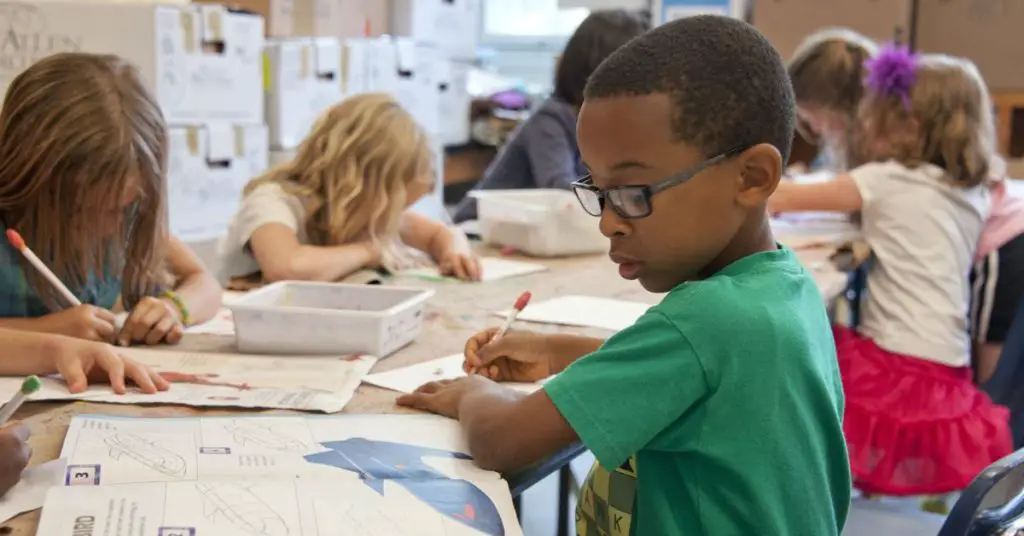
The importance of art in education is undeniable. Fine arts provide a platform for students to observe the world from various perspectives and encourage them to think critically about new concepts.
Education research suggests that teaching students how to analyze, reason, problem-solve, question assumptions and communicate effectively can help prepare them for life’s challenges.
Integrating fine arts into classrooms not only helps develop these skills but allows students to explore their creativity as well.
Art can be used as an effective tool when it comes to teaching critical thinking skills.
With access to materials such as clay, paintbrushes or even pencils, teachers can guide their students through activities which involve open-ended questions and creative problem-solving – all while helping build self-confidence and independence.
By providing opportunities for students to challenge themselves with unfamiliar ideas, they are able to gain valuable insight into our diverse society and learn more about themselves along the way.
As educators strive towards finding ways of connecting traditional curriculum with art, there is no better time than now to explore arts integration in the classroom.
Exploring Arts Integration In The Classroom
As the saying goes, “A picture is worth a thousand words” and this rings true when it comes to the importance of art in education.
Americans for the Arts believe that an arts education is essential for all students as it allows them to be creative thinkers and problem solvers.
The benefits of having an education system which includes the arts introduce students to different cultures, broaden their perspectives, encourage collaboration, and cultivate critical thinking skills.
Moreover, by engaging with art, students can develop valuable skills such as communication, emotional intelligence, self-expression and concentration. All of which are beneficial not only in the classroom but also in life beyond school.
It has been proven that schools implementing arts integration see higher student engagement than those without; further emphasizing the value of art in educational settings.
Therefore, we must recognize its potential for fostering creativity among our younger generations and support initiatives which promote increased access to meaningful experiences within arts & culture environments.
With these opportunities available to them, students will have more opportunities to build confidence and express themselves while developing invaluable skillsets necessary for success into adulthood.
The Impact Of Art On Student Engagement
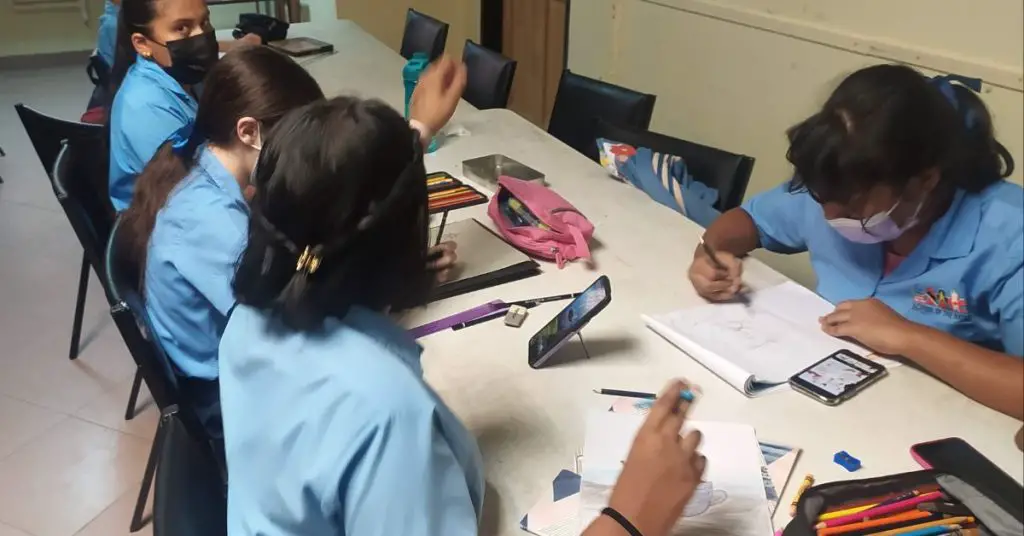
The impact of art on student engagement is significant.
According to the National Endowment for the Arts, education leaders are recognizing that Americans for the Arts state students who participate in at least three hours of arts instruction per day have higher GPAs and test scores than those with no access to the arts.
In addition, the Department of Education reports that students engaged in visual arts learn problem-solving skills by working through challenging tasks.
Through these experiences, they gain an appreciation for different cultures and a greater understanding of their own identity.
Art also promotes empathy as students develop relationships with peers while expressing themselves creatively.
These outcomes demonstrate how vital art is to academic success and overall well-being.
By making it part of our curriculum, we can create learning environments where every child feels inspired and empowered to reach their potential.
Ways To Incorporate Visual Arts Into A Curriculum
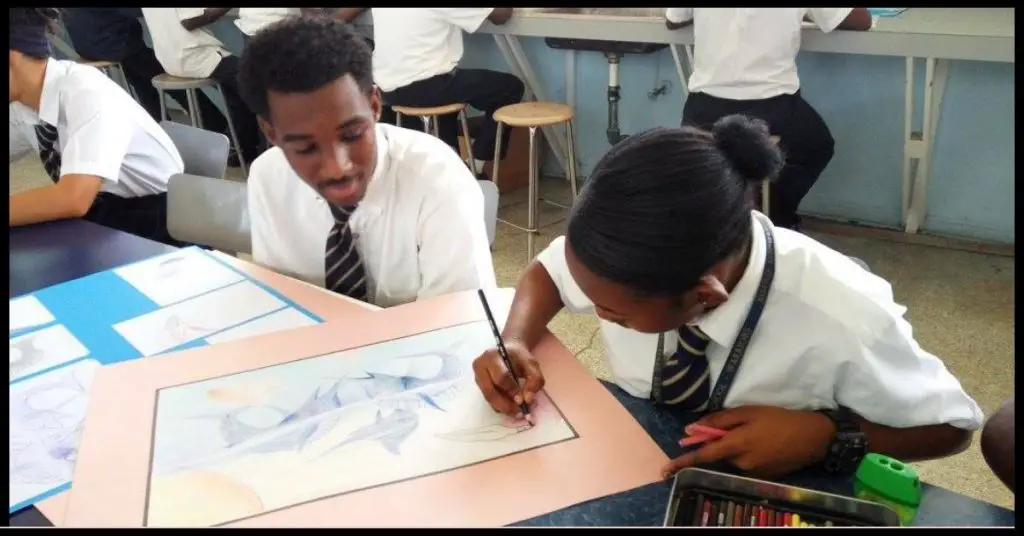
The importance of art in education cannot be overlooked, as it can have a powerful impact on students’ engagement and learning. Incorporating visual arts into the curriculum is one way to foster creativity and critical thinking while also helping students develop self-expression skills.
The English Language Arts (ELA) standards from the National Association for Education of Young Children (NAEYC), suggest that young children should be exposed to a variety of artistic activities such as music, drawing, painting and sculpting.
For those children who do not participate in more traditional forms of instruction or assessment, art can provide an effective avenue for expression.
Evidence supports the notion that providing access to various types of art is beneficial to student learning.
Studies show that allowing students to engage with their peers through creative projects fosters collaboration, communication and problem-solving skills – all essential components when developing social-emotional competencies.
Art also encourages individual exploration and creative risk-taking which are important aspects of cultivating curiosity and resilience among learners.
Moreover, by exposing students to different media they gain knowledge about form, line and colour which can then be applied across other subject areas like science or math.
Incorporating visual arts into the classroom offers many opportunities for meaningful learning experiences both academically and emotionally; thereby enhancing student engagement overall.
This type of integration provides multiple benefits including improved academic performance, greater motivation towards learning tasks, increased comprehension skills and higher levels of self-confidence – all necessary qualities when striving towards success in school today.
Understanding The Importance Of Art Education
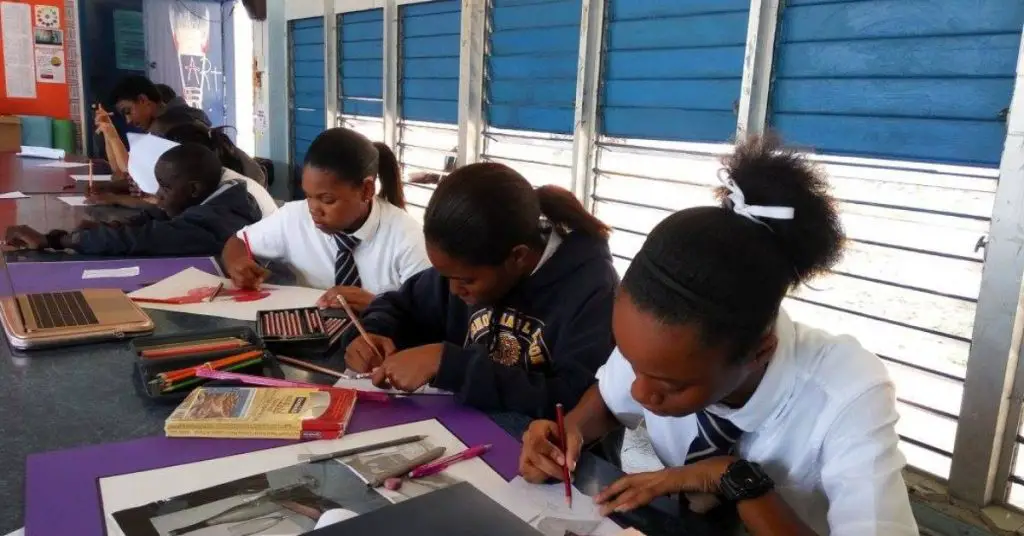
It has become increasingly evident that art plays an important role in education.
There are numerous ways for young people to benefit from the arts, ranging from improved academic performance to career development.
In addition to improving academic performance, engaging with the arts also helps promote problem-solving skills, critical thinking abilities, and concepts like collaboration and creativity.
Further, it can help prepare students for college or future careers by developing knowledge of digital media tools such as video editing software and 3D printing technology.
Participating in the visual arts can also provide insight into different cultures while building self-confidence and making connections with other members of society.
The importance of art in education is undeniable; it allows students to explore their own creativity while honing essential skills related to communication, social interaction, and career development.
Artistic experiences offer many opportunities for growth and learning which cannot be found elsewhere.
By integrating more art into educational settings we can ensure our children receive well-rounded educations that will set them up for success today and tomorrow.
Final Thoughts on the Importance Of Art in Education
In conclusion, the importance of art in education cannot be overstated.
It provides students with a range of physical, mental, social and emotional benefits that can last them through adulthood.
Moreover, introducing different mediums like drawing or music into the curriculum allows children to express themselves creatively while gaining valuable skills at the same time.
Some may argue that traditional academic subjects should take precedence over art classes.
However, we must recognize that both fields are equally important for developing well-rounded individuals who possess critical thinking and creative problem-solving skills.
We owe it to our youth to provide access to quality resources so they can get the most out of their educational experience.
The value of art lies not only in its ability to teach us about ourselves but also in fostering a greater appreciation for culture and history.
Through art, kids become more aware of how diverse perspectives shape our world – something all educators should strive to impart to their students.
With proper support and guidance from teachers, young people will gain an understanding of why art is essential for personal growth as well as society’s development overall.
References:
- “Arts Integration in School: 10 Reasons Why It’s Important – Seneca Academy.” Seneca Academy, www.senecaacademy.org/10-reasons-why-integrating-art-is-important-in-school.
- “The Benefits of Arts Education for K-12 Students.” US News & World Report, 30 Aug. 2022, //www.usnews.com/education/k12/articles/the-benefits-of-arts-education-for-k-12-students.
- “Development of Fine Motor Skills Through Art.” Development of Fine Motor Skills Through Art, phillyartcenter.com/blog/development-of-fine-motor-skills-through-art/#:~:text=One%20of%20the%20most%20important,make%20learning%20to%20write%20easier.
- “Five Ways Art Can Enhance Creative Thinking in Kids – Moonpreneur.” Moonpreneur, 15 Oct. 2020, moonpreneur.com/blog/five-ways-art-can-enhance-creative-thinking-in-kids.
- “The Arts in Early Childhood: Social and Emotional Benefits of Arts Participation.” The Arts in Early Childhood: Social and Emotional Benefits of Arts Participation | Americans for the Arts, 15 May 2019, www.americansforthearts.org/by-program/reports-and-data/legislation-policy/naappd/the-arts-in-early-childhood-social-and-emotional-benefits-of-arts-participation.
- “The Importance of Art in Building Cultural Awareness – Break Out of the Box.” The Importance of Art in Building Cultural Awareness – Break Out of the Box, 7 Dec. 2022, www.breakoutofthebox.com/the-importance-of-art-in-building-cultural-awareness.
- Chen, Grace. “How The Arts Benefit Your Children Academically and Behaviorally – PublicSchoolReview.com.” Public School Review, 13 Feb. 2023, www.publicschoolreview.com/blog/how-the-arts-benefit-your-children-academically-and-behaviorally.
- “Teaching Critical Thinking Through Art.” Teaching Critical Thinking Through Art, www.nga.gov/audio-video/teaching-critical-thinking-through-art.html.
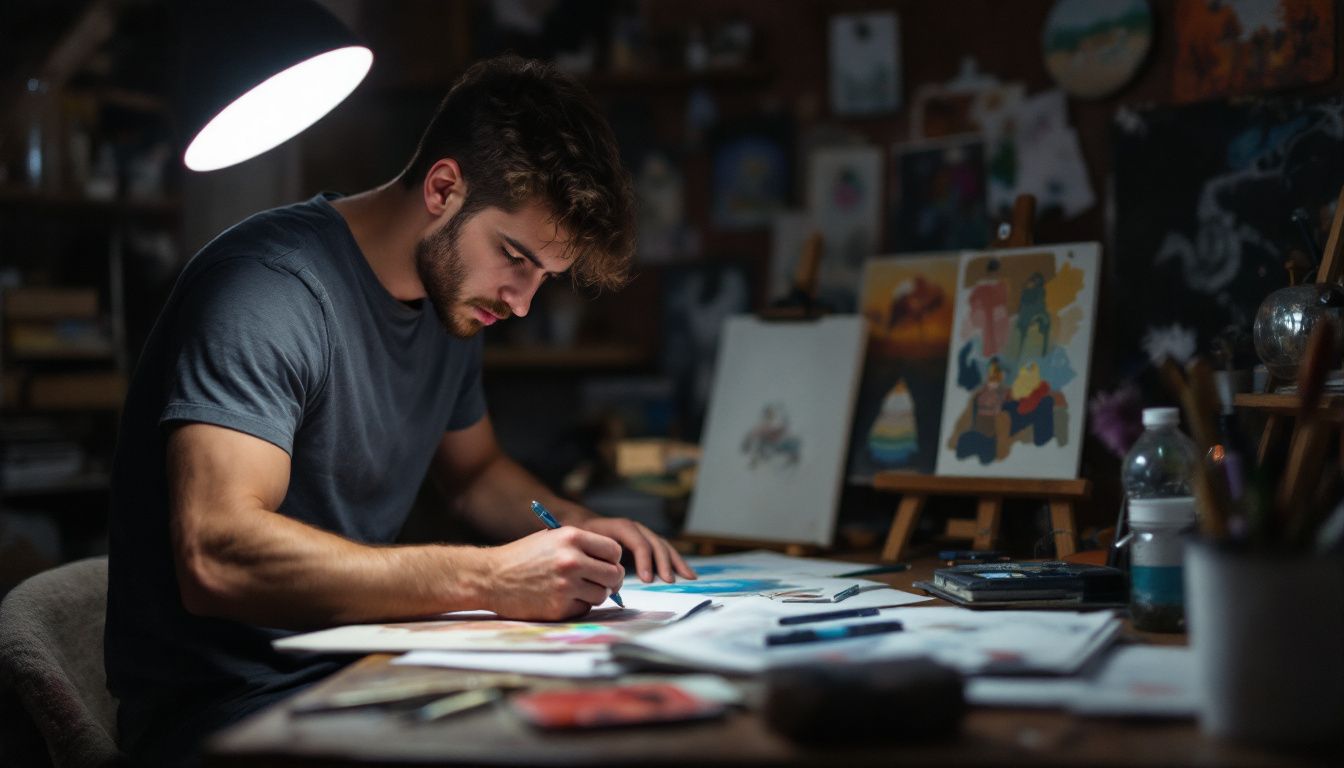
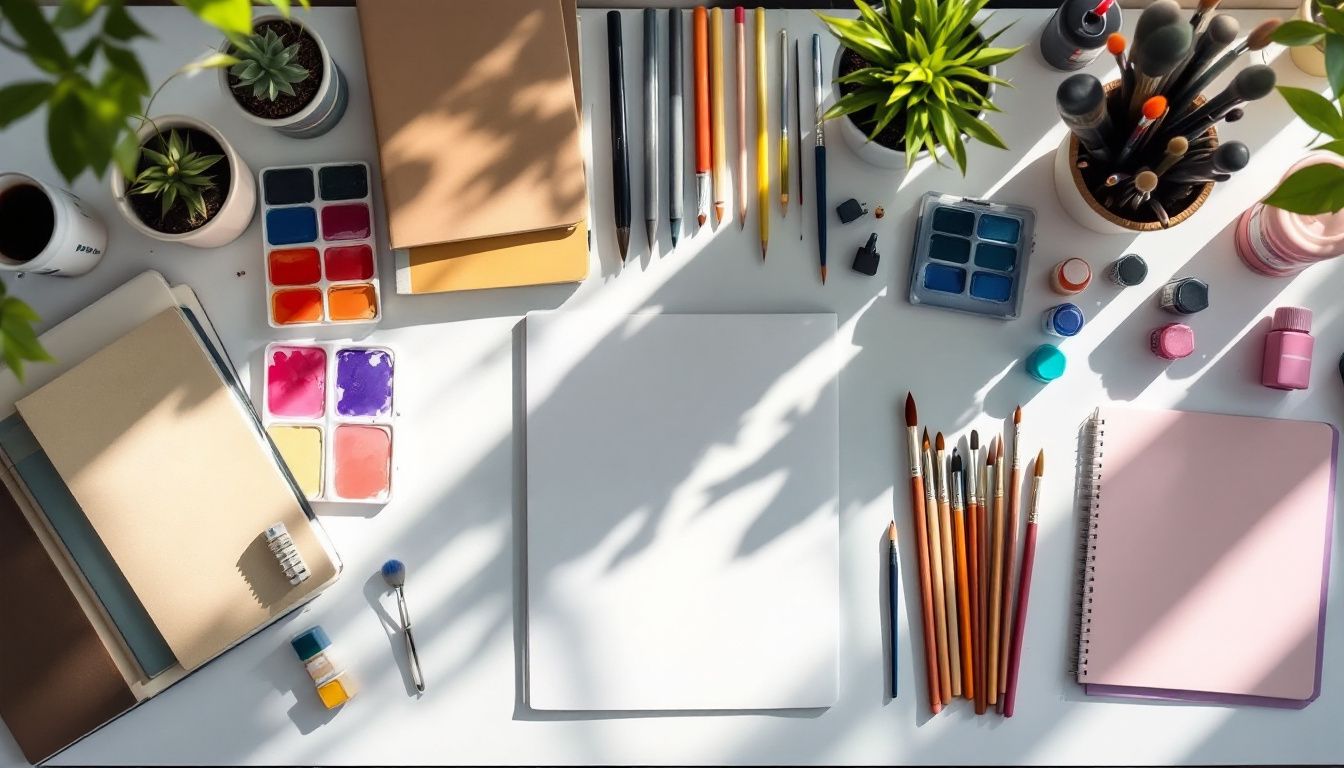
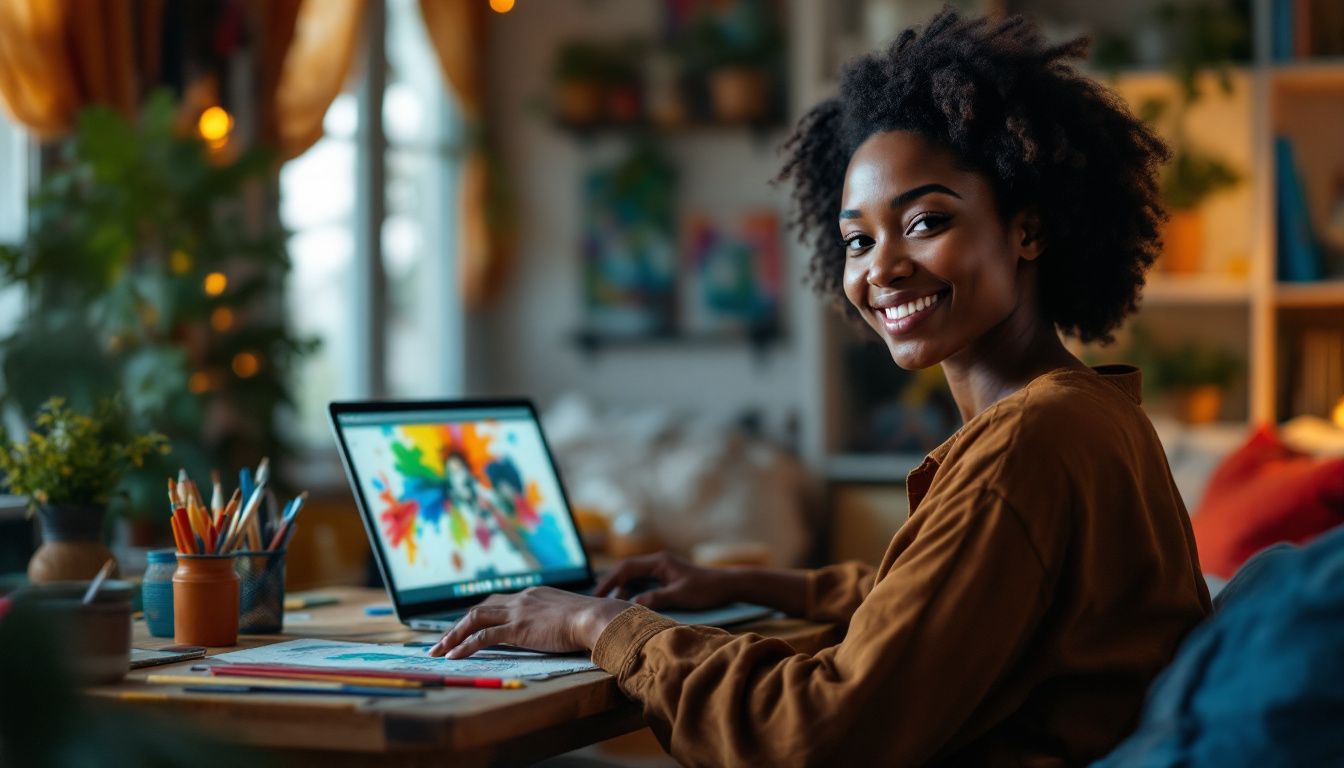
Leave a Reply